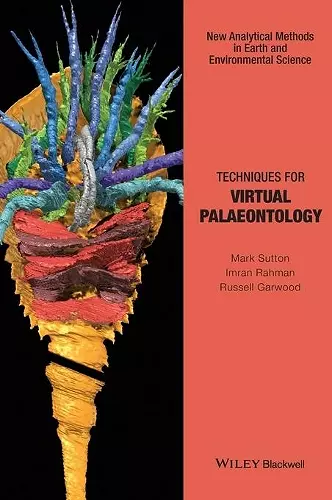Techniques for Virtual Palaeontology
Mark Sutton author Russell Garwood author Imran Rahman author
Format:Hardback
Publisher:John Wiley and Sons Ltd
Published:17th Jan '14
Currently unavailable, and unfortunately no date known when it will be back

Virtual palaeontology, the use of interactive three-dimensional digital models as a supplement or alternative to physical specimens for scientific study and communication, is rapidly becoming important to advanced students and researchers. Using non-invasive techniques, the method allows the capture of large quantities of useful data without damaging the fossils being studied
Techniques for Virtual Palaeontology guides palaeontologists through the decisions involved in designing a virtual palaeontology workflow and gives a comprehensive overview, providing discussions of underlying theory, applications, historical development, details of practical methodologies, and case studies. Techniques covered include physical-optical tomography (serial sectioning), focused ion beam tomography, all forms of X-ray CT, neutron tomography, magnetic resonance imaging, optical tomography, laser scanning, and photogrammetry. Visualization techniques and data/file formats are also discussed in detail.
Readership: All palaeontologists and students interested in three-dimensional visualization and analysis.
New Analytical Methods in Earth and Environmental Science
Because of the plethora of analytical techniques now available, and the acceleration of technological advance, many earth scientists find it difficult to know where to turn for reliable information on the latest tools at their disposal, and may lack the expertise to assess the relative strengths or limitations of a particular technique. This new series will address these difficulties by providing accessible introductions to important new techniques, lab and field protocols, suggestions for data handling and interpretation, and useful case studies. The series represents an invaluable and trusted source of information for researchers, advanced students and applied earth scientists wishing to familiarise themselves with emerging techniques in their field.
All titles in this series are available in a variety of full-colour, searchable eBook formats. Titles are also available in an enhanced eBook edition which may include additional features such as DOI linking, high resolution graphics and video.
“The authors have produced a well-organized volume that is easily accessible to both professionals and nonprofessionals and will likely be cited as an introductory source as virtual technologies in paleontology continue to emerge.” (The Quarterly Review of Biology, 1 October 2015)
“Techniques for Virtual Palaeontology thus provides an excellent background for students who are likely to encounter virtual techniques as they embark on a palaeontological career. It also successfully informs more established palaeontologists who either plan to enter the field or, like me, dabble in 3D but would like more background information. It is a valuable addition to the palaeontological bookshelf.” (Geological Journal, 1 May 2015)
ISBN: 9781118591130
Dimensions: 264mm x 187mm x 22mm
Weight: 685g
208 pages